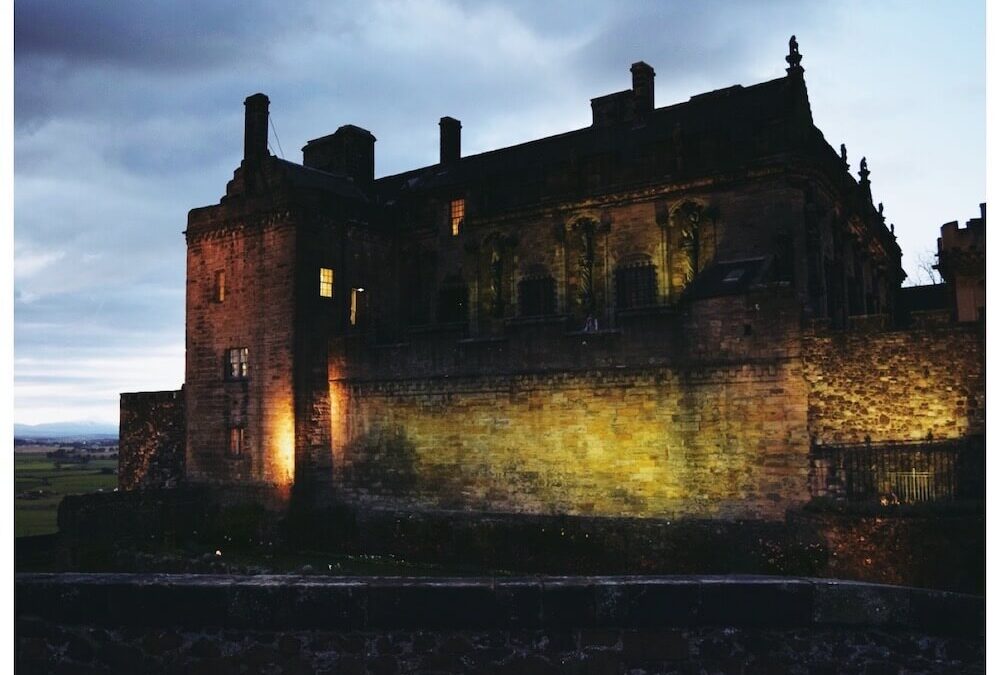What You Can See From the Ramparts
Stirling Castle merits a visit any day.
We discuss the interior of the castle in another blog post.
Here we want to guide you through what you can see from the Stirling castles’ outer walls, and encourage you to avoid the busiest times and try a dusk-laced visit.
If you are on a budget, much of what is described in this post can be seen for free just by visiting the outside of the castle walls.
Winter/autumn and mid-late afternoon are the best times to visit!
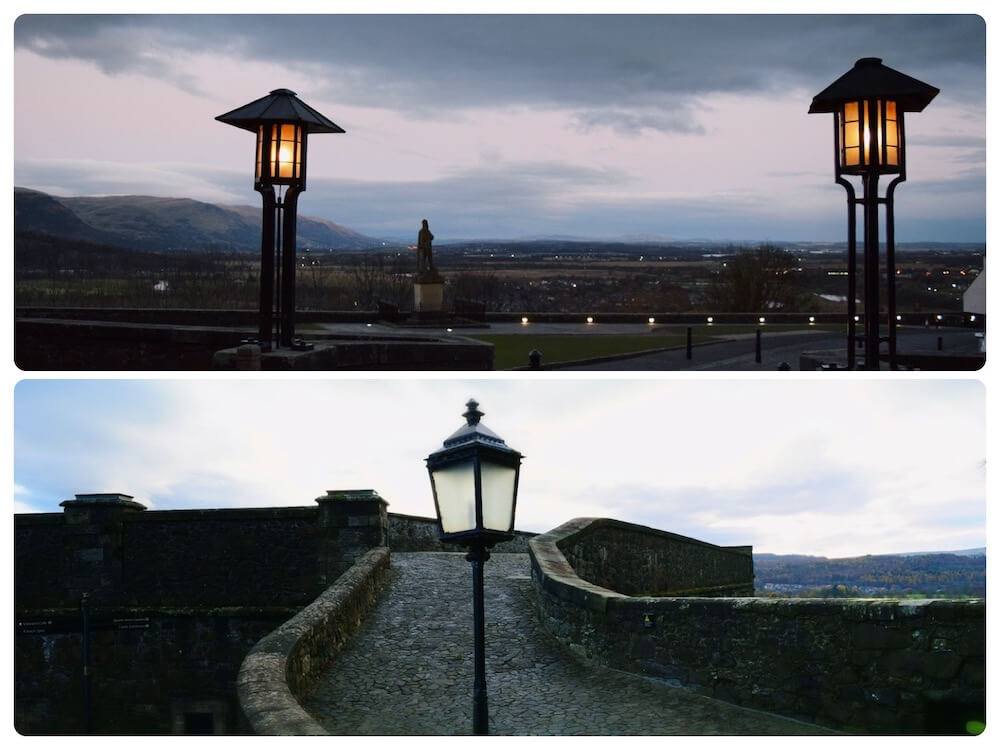
Stirling Castle Within its Landscape
Nestled into the shelter of the castle walls, you can’t help but wonder to what extent the views from the castle’s walls have changed over time.
Stirling Castle overlooks the City of Stirling and surrounding carse (a low, fertile strip of land along a river).
The valley and the plug of hard volcanic rock where the castle sits were themselves scraped out by the movement of glaciers flowing east from the Highlands during the Ice Age.
The resulting carse is so flat that its river meanders across it in generous oxbow loops: becoming a silvery ribbon in low light.
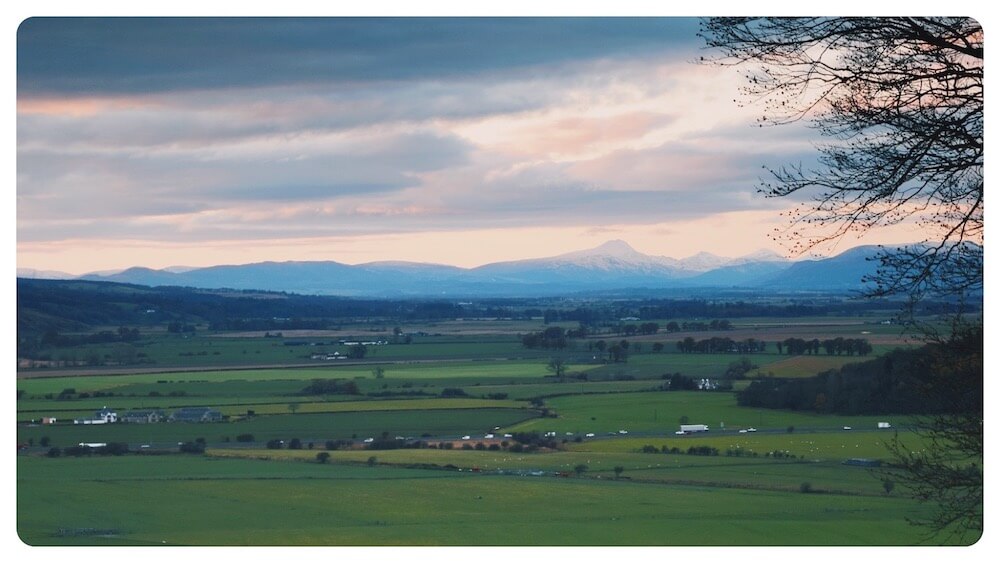

International Visitors
Look up. The Carse of Stirling is winter home to migrating greylag and pink-footed geese.
At dusk, thousands of them settle along the wide mudflats of the Forth.
Despite being inland, Stirling lies where the North Sea mixes with the river Forth, making it brackish around Stirling and increasingly salty and tidal further east, where wide mudflats get revealed when the sea tides are low in the river and provide a rich feeding ground for geese and seabirds.


Visit Scotland | Flanders Moss
The western part of the Carse of Stirling is one of the last remnants of the great bogs that once covered much of Scotland. Flanders Moss NNR (National Nature Reserve), is one of the largest lowland raised bogs in Britain and one of the most intact raised bogs in Europe, remarkably, it has remained in a near-natural state since it drained 8,000 years ago.
It provides vital habitat for many endangered species – and another taste of timelessness for visitors.

Stirling Castle’s Earthworks
If you look down, directly below the castle you can see the King’s Park’s historic earthworks, which have been excavated and (re)formed into their original, geometric shapes.
Known as King’s Knot and Ladies’ Knot, these built structures are where monarchs once partook in jousting, hawking and hunting. Their surrounding gardens once supplied castle dwellers with fruits and vegetables.
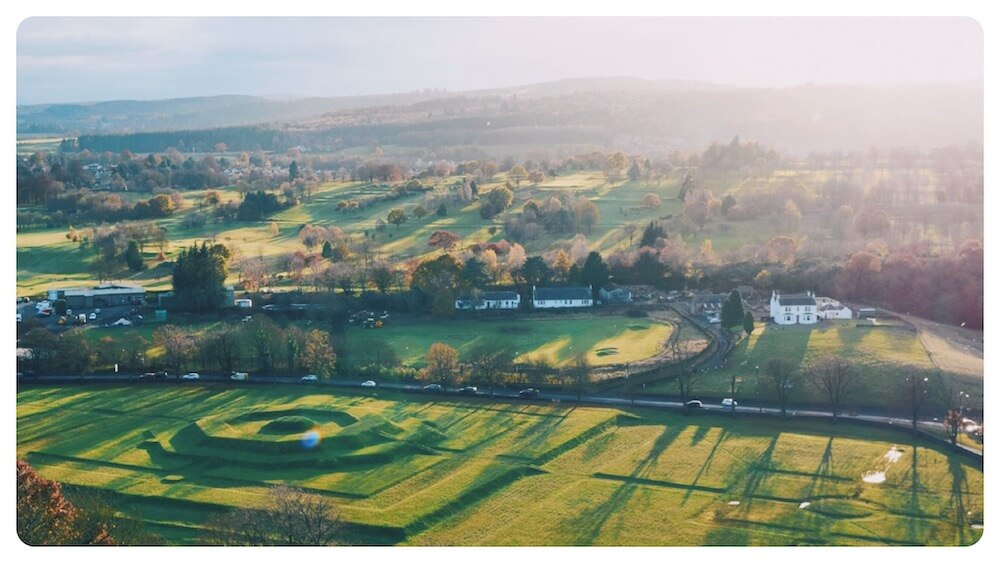


Medieval Stirling
As night takes over the earth, look over our contemporary version of the still recognisably medieval townscape and the surrounding arable farmland: this land concealed generations of advancing armies, whose blood poured into its ground.
Witness the daily tableau of car lights and street lights twinkling on.
Imagine a River Red with Blood
One of the principal royal strongholds of the Kingdom of Scotland, Stirling was once a royal burgh and capital of Scotland.
Many battles from the War of Independence occurred around the Carse of Stirling, most notably the Battle of Stirling Bridge.
Stirling Castle was already in English hands when William Wallace led an attack on the invading English at Stirling Bridge. The Scots were outnumbered, but by attacking at the crossing point of the river, the English could not make full use of their cavalry or archers.
The English forces were ambushed after a sizeable (but beatable) portion of the army had crossed the bridge.
Those who crossed over struggled to retreat, whilst oncoming soldiers still tried to pile forwards, creating a bottleneck of vulnerable invaders, who were slain on a huge scale.
Fearing the massacre had rendered them outnumbered, the English commander ordered the immediate destruction of the bridge, leaving all remaining soldiers on the far side to be slain (or drowned as they struggled, heavily armoured into the Forth to escape).
Scottish casualties were not recorded.
The English lost 6000 men.
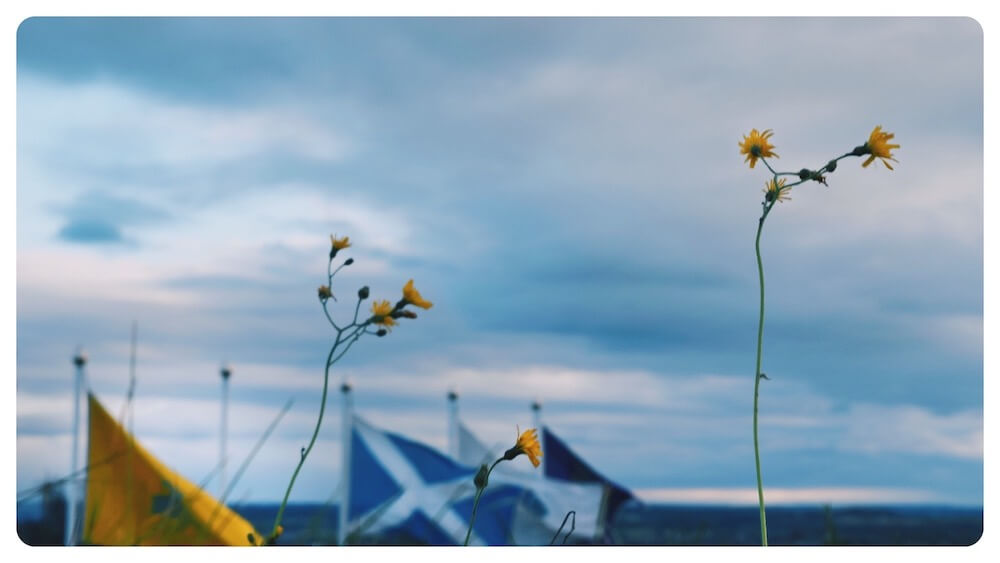
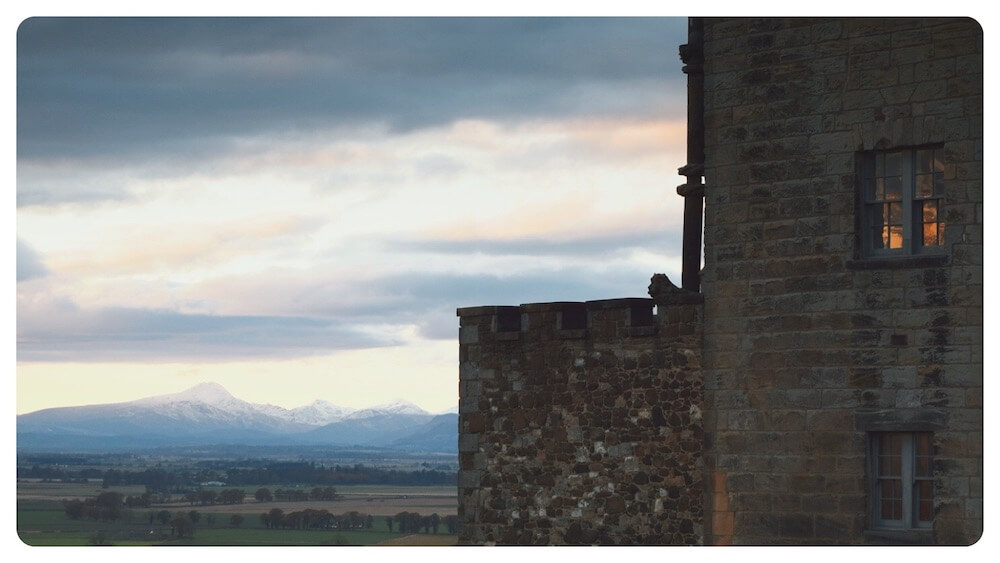
Tiny, Spirited Flowers
The victory at Stirling Bridge led to the ascent of William Wallace and he was named Guardian of Scotland.
The castle itself was in Scottish control once more, but only briefly. It went on to change hands many times again.

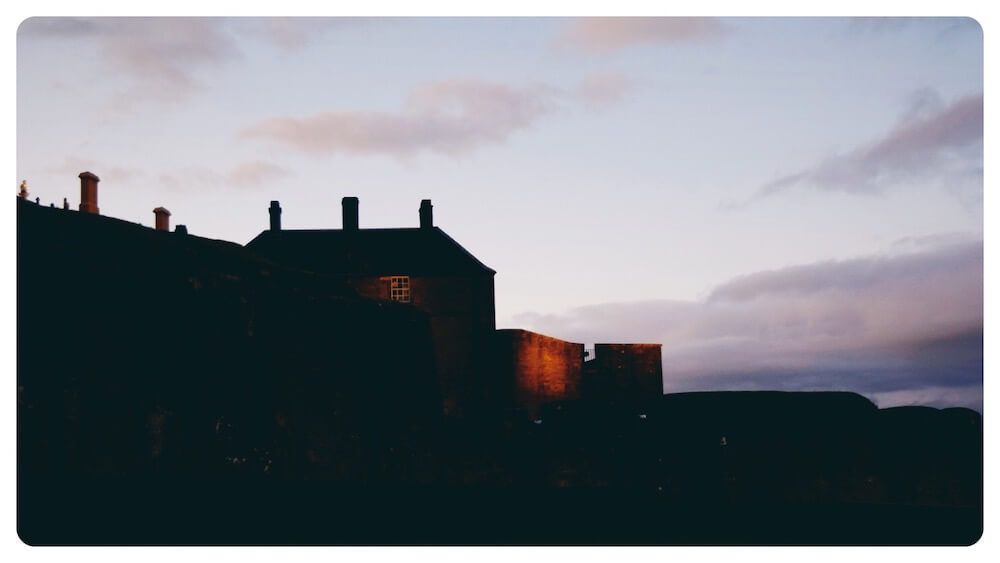
It is from these walls that the king’s alchemist, John Damian, once flew.
King James IV was an intelligent monarch with an interest in medicine and even had a working knowledge of surgery.
Like most nobles of his time, he was excited by the potential of alchemy and the possibilities of alchemical research.
To this end, in around 1500 he brought an Italian alchemist to his court at Stirling Castle, whom he hoped would provide him with the most coveted treasure of the time: the Philosopher’s Stone.
Huge amounts of money (and copious amounts of whisky) were to fuel a variety of diverse scientific experiments by the alchemist.
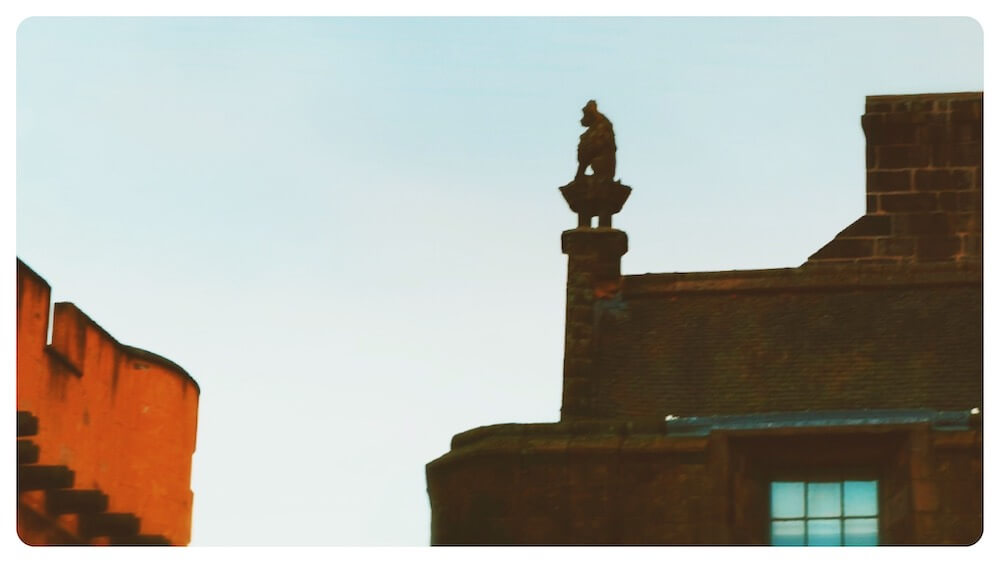
A Wonderful Way to Experience Scotland
Thank you for reading about our English Language School visit to Stirling Castle.
I hope to have given you a taste of the atmosphere of a late afternoon wintery visit which allows you to feel alone in the castle and to absorb the sunset over the its spectacular landscape.


